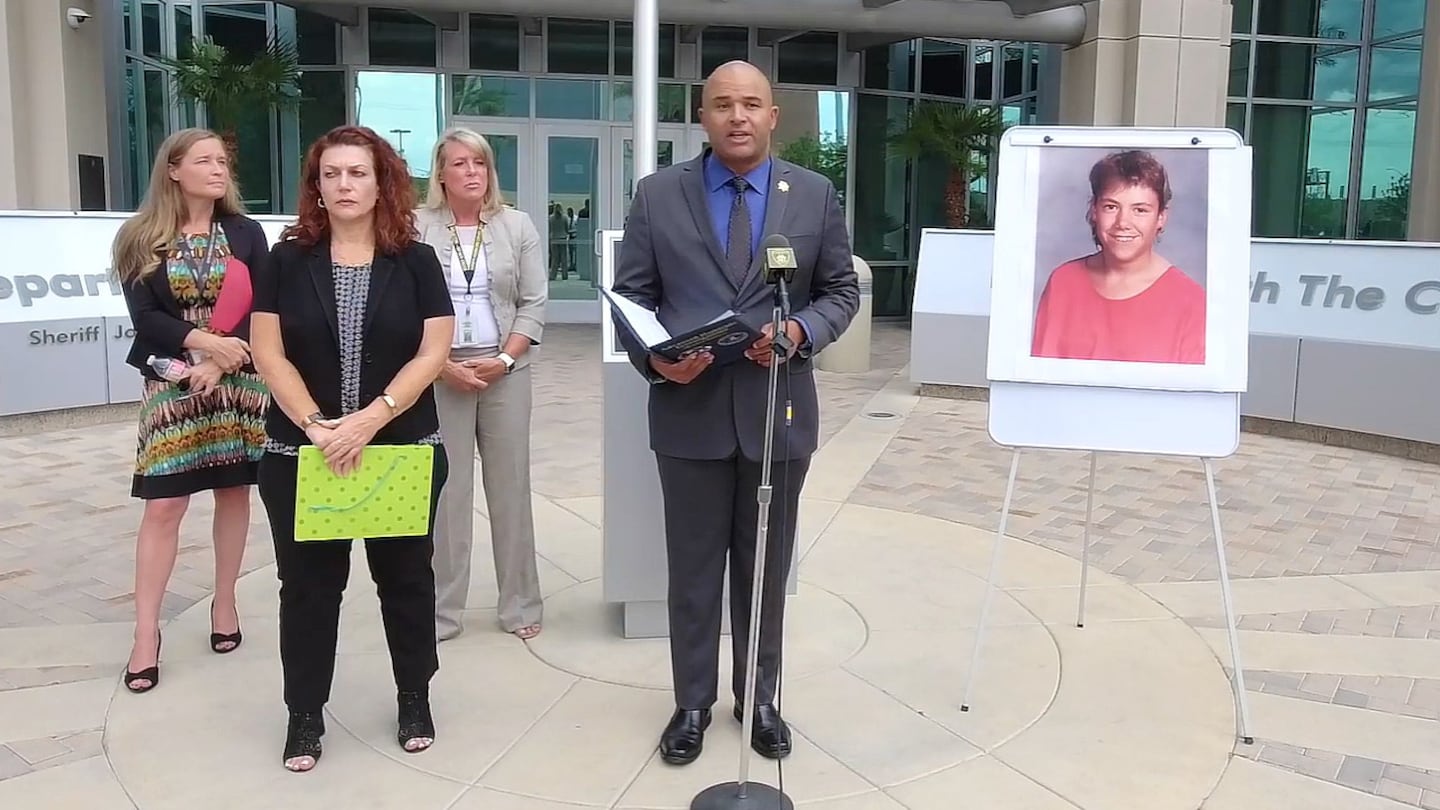LAS VEGAS — When 14-year-old Stephanie Isaacson was found bludgeoned, raped and strangled in an empty Las Vegas sandlot in 1989, police had little to go on other than a small amount of DNA on her shirt.
The case went cold and stayed that way for 32 years.
Authorities announced July 21 that a Texas forensics lab had taken that tiny amount of genetic material — the equivalent of fewer than 15 human cells — and identified the teen’s alleged killer. The minuscule DNA sample is the smallest amount ever used to solve a case, Las Vegas Metropolitan police officials said.
The material, combined with genetic genealogy research, has linked Darren Roy Marchand to Stephanie’s murder. Marchand, who was accused of a similar murder three years before Stephanie’s death, committed suicide in 1995 at the age of 29.
“I’m glad they found who murdered my daughter,” Stephanie’s mother, whose name was not released, said in a statement read by police. “I never believed the case would be solved.”
Stephanie vanished the morning of June 1, 1989, as she walked her usual route to Eldorado High School, cutting through a sandlot on the way. According to authorities, her father got worried when she didn’t return home that afternoon and called the school.
He learned from the front office that his daughter had never made it to class.
“At that point, her father contacted all of her friends, and none of them had seen her at school that day,” said homicide Lt. Ray Spencer.
Stephanie’s panicked father called the police.
“At that time, metro police began an exhaustive air and ground search attempting to locate Stephanie,” Spencer said.
Around 8:40 p.m. that evening, some of the teen’s textbooks and other belongings were spotted strewn near the intersection of Nellis Boulevard and Stewart Avenue, which in 1989 was still a “desert area,” police said.
Search parties looking for the missing girl found her body about 25 yards off the trail she took to and from school each day.
Stephanie’s autopsy showed that she’d suffered “significant blunt force trauma injuries and that she had been sexually assaulted,” Spencer said. Her cause of death was strangulation.
Las Vegas detectives began a decades-long investigation to determine who had killed the teen. Multiple potential suspects were identified and eliminated, and investigators traveled across the country following up on leads.
Truly honored to be able to assist the Las Vegas Metropolitan Police Department in identifying the suspect to the sexual assault and murder of Stephanie Isaacson. This ID was made with 120pg DNA, a record-low quantity: https://t.co/u1DqDVdX13
— Othram Inc. (@OthramTech) July 21, 2021
Kim Murga, head of the department’s forensics lab, said the DNA evidence had been tested multiple times over the decades as technology improved. It was not until 2007, however, that the stain on Stephanie’s shirt provided a DNA profile of her killer.
Over the next 13 years, the lab compared the unknown man’s DNA profile to more than 30 samples collected in the case. None matched.
In November 2020, Othram Inc., a private lab in The Woodlands, Texas, that specializes in genome sequencing for law enforcement, reached out to offer Murga and her team its services. There was still the issue of the cost of the testing, however.
That’s where Las Vegas entrepreneur and philanthropist Justin Woo came in. Woo, the founder of the nonprofit organization Vegas Helps, donated $5,000 to help Othram and the police department solve a cold case that had little DNA evidence to work with.
“Stephanie’s case was chosen specifically because of the minimal amount of DNA evidence that was available,” Spencer said.
Watch the July 21 news conference in the case below.
Detectives sent the scant DNA evidence they had left to Othram, where forensic scientists spent the next seven months using the company’s genome sequencing technique to build a genetic profile of the alleged killer.
“The Othram genealogy team used the profile to develop investigative leads that were returned to LVMPD,” a news release from the company stated.
The leads ultimately led to Marchand.
From vacation last week, Woo congratulated Othram’s scientists and Las Vegas cold case investigators on solving the case.
“What’s better than vacationing in Greece? This!” Woo wrote on Facebook.
Woo told the Las Vegas Sun that a friend had introduced him to David Mittelman, founder and CEO of Othram. Impressed with the company’s mission, he decided to fund the testing in a Las Vegas-area cold case from his own pocket.
“It’s really such a sad case, and we’re glad that we could help with it,” Woo told the newspaper.
Marchand, who was 23 years old when Stephanie Isaacson was murdered, had previously been arrested in the Feb. 27, 1986, strangulation homicide of Nanette Vanderburg, 24, of Las Vegas. Details of that case were not available, but authorities said the case against Marchand was later dismissed for a lack of evidence.
There was DNA evidence in Vanderburg’s killing, but testing was not yet available.
The new testing that linked Marchand to Stephanie’s murder also linked him to Vanderburg’s death.
“Marchand’s DNA from the case involving Nanette was compared to the DNA located in Stephanie’s case, and it was a match,” police officials said.
>> Read more true crime stories
It was unclear how detectives initially tied Marchand to Vanderburg’s killing in 1986, but Spencer said there is no way to know if he knew Stephanie prior to the day of her murder.
“It appears to be a random attack while she was walking to school,” the lieutenant said.
The slain teen’s family has some of the answers they’ve sought for so long, but the man accused of killing her will never be held criminally responsible.
“It’s good to have some closure, but there is no justice for Stephanie at all,” her mother’s statement read. “We will never have complete closure because nothing will ever bring my daughter back to us.”
©2021 Cox Media Group







